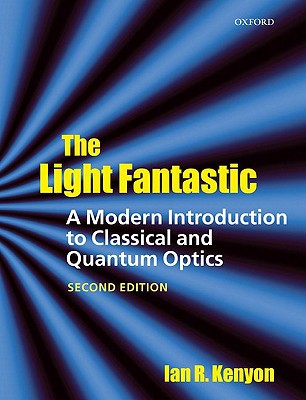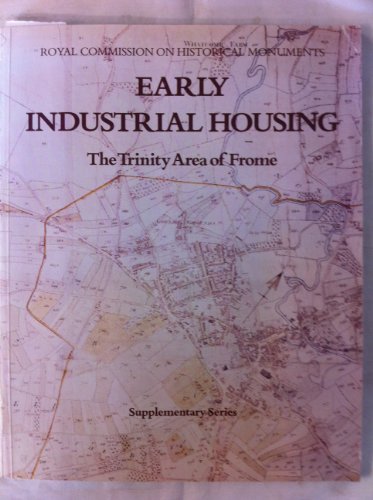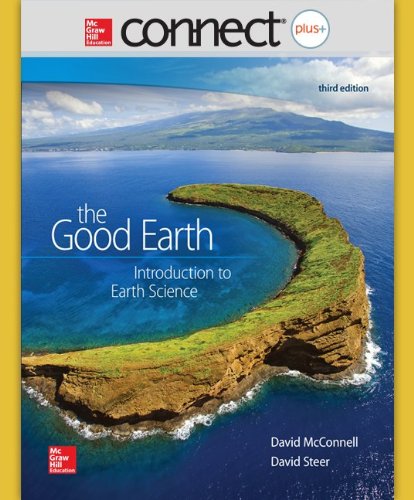The Light Fantastic: A Modern Introduction to Classical and Quantum Optics
Kenyon, Ian
Machine Generated Contents Note: 1. Introduction -- 1.1. Aims And Overview -- 1.2. Electromagnetic Waves -- 1.3. The Velocity Of Light -- 1.4. A Brief Outline Of Electromagnetic Wave Theory -- 1.4.1. More General Waveforms -- 1.5. The Electromagnetic Spectrum -- 1.5.1. Visible Spectra -- 1.6. Absorption And Dispersion -- 1.7. Radiation Terminology -- 1.8. Black Body Radiation -- 1.9. Doppler Shift -- 1.10. Waveform Conventions -- 2. Reflection And Refraction At Plane Surfaces -- 2.1. Light Rays And Huygens' Principle -- 2.1.1. The Laws Of Reflection -- 2.1.2. Snell's Law Of Refraction -- 2.1.3. Fermat's Principle -- 2.1.4. Simple Imaging -- 2.1.5. Deviation Of Light By A Triangular Prism -- 2.2. Total Internal Reflection -- 2.2.1. Constant Deviation Prism -- 2.2.2. Porro Prisms -- 2.2.3. Corner Cube Reflector -- 2.2.4. Pulfrich Refractometer -- 2.3. Optical Fibre -- 2.4. Micromirror Projector -- 3. Spherical Mirrors And Lenses -- 3.1. Introduction -- 3.1.1. Cartesian Sign Convention. 3.2. Spherical Mirrors -- 3.2.1. Ray Tracing For Mirrors -- 3.3. Refraction At A Spherical Interface -- 3.4. Thin Lens Equation -- 3.4.1. Ray Tracing For Lenses -- 3.4.2. Magnifiers -- 3.5. Matrix Methods For Paraxial Optics -- 3.5.1. The Equivalent Thin Lens -- 3.6. Aberrations -- 3.6.1. Monochromatic Aberrations -- 3.6.2. Spherical Aberration -- 3.6.3. Coma -- 3.6.4. Astigmatism -- 3.6.5. Field Curvature -- 3.6.6. Distortion -- 3.6.7. Chromatic Aberration -- 3.7. Further Reading -- 4. Optical Instruments -- 4.1. Introduction -- 4.2. The Refracting Telescope -- 4.2.1. Field Of View -- 4.2.2. Etendue -- 4.3. Telescope Objectives And Eyepieces -- 4.4. The Microscope -- 4.5. Cameras -- 4.5.1. Camera Lens Design -- 4.5.2. Slr Camera Features -- 4.5.3. Telecentric Lenses -- 4.5.4. Telephoto Lenses -- 4.5.5. Zoom Lenses -- 4.6. Graded Index Lenses -- 4.7. Aspheric Lenses -- 4.8. Fresnel Lenses -- 5. Interference Effects And Interferometers -- 5.1. Introduction -- 5.2. The Superposition Principle -- 5.3. Young's Two Slit Experiment. 5.3.1. Fresnel's Analysis -- 5.3.2. Interference By Amplitude Division -- 5.4. Michelson's Interferometer -- 5.4.1. The Constancy Of C -- 5.5. Coherence And Wavepackets -- 5.5.1. The Frequency Content Of Wavepackets -- 5.5.2. Optical Beats -- 5.5.3. Coherence Area -- 5.6. Stokes' Relations -- 5.7. Interferometry -- 5.7.1. The Twyman-green Interferometer -- 5.7.2. The Fizeau Interferometer -- 5.7.3. The Mach-zehnder Interferometer -- 5.7.4. The Sagnac Interferometer -- 5.8. Standing Waves -- 5.9. The Fabry-perot Interferometer -- 6. Diffraction -- 6.1. Introduction -- 6.2. Huygens-fresnel Analysis -- 6.3. Single Slit Fraunhofer Diffraction -- 6.4. Diffraction At A Rectangular Aperture -- 6.5. Diffraction From Multiple Identical Slits -- 6.6. Babinet's Principle -- 6.7. Fraunhofer Diffraction At A Circular Hole -- 6.8. Diffraction Gratings -- 6.9. Spectrometers And Spectroscopes -- 6.9.1. Grating Structure -- 6.9.2. Etendue -- 6.9.3. Czerny-turner Spectrometer -- 6.9.4. Littrow Mounting -- 6.9.5. Echelle Grating. 6.9.6. Automated Spectrometers -- 6.10. Fresnel And Fraunhofer Diffraction -- 6.11. Single Slit Fresnel Diffraction -- 6.11.1. Lunar Occupation -- 6.12. Fresnel Diffraction At Screens With Circular Symmetry -- 6.12.1. Zone Plates -- 6.13. Microprocessor Lithography -- 6.14. Near Field Diffiraction -- 6.15. Gaussian Beams -- 6.15.1. Matrix Methods -- 7. Fourier Optics -- 7.1. Introduction -- 7.2. Fourier Analysis -- 7.2.1. Complex Field Usage -- 7.2.2. Diffraction And Convolution -- 7.3. Coherence And Correlations -- 7.3.1. Power Spectra -- 7.3.2. Fourier Transform Spectrometry -- 7.3.3. Line Width And Bandwidth -- 7.4. Image Formation And Spatial Transforms -- 7.5. Spatial Filtering -- 7.5.1. Schlieren Photography -- 7.5.2. Apodization -- 7.6. Acousto-optic Bragg Gratings -- 7.6.1. Microwave Spectrum Analysis -- 7.7. Holography -- 7.7.1. Principles Of Holography -- 7.7.2. Hologram Preparation -- 7.7.3. Motion And Vibration Analysis -- 7.7.4. Thick Holograms -- 7.8. Optical Information Processing -- 7.8.1. The 4f Architecture. 7.8.2. Data Storage And Retrieval -- 8. Astronomical Telescopes -- 8.1. Introduction -- 8.2. Telescope Design -- 8.2.1. Auxiliary Equipment -- 8.3. Schmidt Camera -- 8.4. Atmospheric Turbulence -- 8.5. Adaptive Optics -- 8.5.1. Lucky Imaging -- 8.6. Michelson's Stellar Interferometer -- 8.7. Modern Interferometers -- 8.8. Aperture Synthesis -- 8.9. Aperture Arrays -- 8.10. Image Recovery -- 8.11. Comparisons With Radioastronomy -- 8.12. Gravitational Wave Detectors -- 8.12.1. Laser-cavity Locking -- 8.12.2. Noise Sources -- 8.13. Gravitational Imaging -- 9. Classical Electromagnetic Theory -- 9.1. Introduction -- 9.2. Maxwell's Equations -- 9.3. The Wave Equation -- 9.3.1. Energy Storage And Energy Flow -- 9.4. Electromagnetic Radiation -- 9.5. Reflection And Refraction -- 9.6. Fresnel's Equations -- 9.7. Interference Filters -- 9.7.1. Analysis Of Multiple Parallel Plane Layers -- 9.7.2. Beam Splitters -- 9.8. Modes Of The Electromagnetic Field -- 9.8.1. Mode Counting -- 9.9. Planar Waveguides -- 9.9.1. The Prism Coupler. 10. Polarization -- 10.1. Introduction -- 10.2. States Of Polarization -- 10.3. Dichroism And Malus' Law -- 10.4. Birefringence -- 10.4.1. Analysis Of Birefringence -- 10.4.2. The Index Ellipsoid -- 10.4.3. Energy Flow And Rays -- 10.4.4. Huygens' Construction -- 10.5. Wave Plates -- 10.5.1. Jones Vectors And Matrices -- 10.5.2. Prism Separators -- 10.5.3. Polarizing Beam Splitters And Dvd Readers -- 10.6. Optical Activity -- 10.7. Effects Of Applied Electromagnetic Fields -- 10.7.1. Pockels Effect And Modulators -- 10.7.2. Kerr Effect -- 10.7.3. Faraday Effect -- 10.8. Liquid Crystals -- 10.8.1. The Twisted Nematic Lcd -- 10.8.2. In-plane Switching -- 10.8.3. Polymer Dispersed Liquid Crystals (pdlc) -- 10.8.4. Ferroelectric Liquid Crystals (felc) -- 10.9. Further Reading -- 11. Scattering, Absorption And Dispersion -- 11.1. Introduction -- 11.2. Rayleigh Scattering -- 11.2.1. Coherent Scattering -- 11.3. Mie Scattering -- 11.4. Absorption -- 11.5. Dispersion And Absorption -- 11.5.1. The Atomic Oscillator Model. 11.6. Metallic Absorption And Reflection -- 11.6.1. Plasmas In Metals -- 11.6.2. Group And Signal Velocity -- 11.6.3. Surface Plasma Waves -- 11.7. Further Reading -- 12. The Quantum Nature Of Light And Matter -- 12.1. Introduction -- 12.2. The Black Body Spectrum -- 12.3. The Photoelectric Effect -- 12.4. The Compton Effect -- 12.5. De Broglie's Hypothesis -- 12.6. The Bohr Model Of The Atom -- 12.6.1. Beyond Hydrogen -- 12.6.2. Weaknesses Of The Bohr Model -- 12.7. Wave-particle Duality -- 12.8. The Uncertainty Principle -- 12.9. Which Path Information -- 12.10. Wavepackets And Modes -- 12.10.1. Etendue -- 12.11. Afterword -- 12.12. Further Reading -- 13. Quantum Mechanics And The Atom -- 13.1. Introduction -- 13.2. An Outline Of Quantum Mechanics -- 13.3. Schroedinger's Equation -- 13.3.1. The Square Potential Well -- 13.4. Eigenstates -- 13.4.1. Orthogonality Of Eigenstates -- 13.5. Expectation Values -- 13.5.1. Collapse Of The Wavefunction -- 13.5.2. Compatible Or Simultaneous Observables -- 13.6. The Harmonic Oscillator Potential. 13.7. The Hydrogen Atom -- 13.8. The Stern-gerlach Experiment -- 13.9. Electron Spin -- 13.10. Multi-electron Atoms -- 13.10.1. Resonance Fluorescence -- 13.10.2. Atoms In Constant Fields -- 13.11. Photon Momentum And Spin -- 13.12. Quantum Statistics -- 13.13. Line Widths And Decay Rates -- 13.14. Further Reading -- 14. Lasers -- 14.1. Introduction -- 14.2. The Einstein Coefficients -- 14.3. Prerequisites For Lasing -- 14.4. The He:ne Laser -- 14.4.1. Three And Four Level Lasers -- 14.4.2. Gain -- 14.4.3. Cavity Modes -- 14.4.4. Hole Burning -- 14.4.5. Laser Speckles -- 14.4.6. Optical Beats -- 14.5. The Co2 Gas Laser -- 14.6. Organic Dye Lasers -- 14.6.1. Saturation Spectroscopy -- 14.6.2. Cavity Ring-down Spectroscopy -- 14.6.3. A Heterodyne Laser Interferometer -- 14.7. Introducing Semiconductors -- 14.7.1. Double Heterostructure Lasers -- 14.7.2. Dfb Lasers -- 14.7.3. Limiting Line Widths -- 14.8. Quantum Well Lasers -- 14.8.1. Vertical Cavity Lasers -- 14.9. Nd:yag And Nd:glass Lasers -- 14.9.1. Q Switching -- 14.10. Ti:sapphire Lasers. 14.11. Optical Kerr Effect And Mode Locking -- 14.11.1. Mode Locking -- 14.12. Frequency Combs -- 14.12.1. Optical Frequency Measurement -- 14.13. Extreme Energies -- 14.14. Second Order Non-linear Effects -- 14.14.1. Raman Scattering -- 14.14.2. Brillouin Scattering -- 14.14.3. Stimulated Raman And Brillouin Scattering -- 14.15. Further Reading -- 15. Detectors -- 15.1. Introduction -- 15.2. Photoconductors -- 15.3. Photodiodes -- 15.3.1. Dark Current -- 15.4. Photodiode Response -- 15.4.1. Speed Of Response -- 15.4.2. Noise -- 15.4.3. Amplifiers -- 15.4.4. Solar Cells -- 15.5. Avalanche Photodiodes -- 15.6. Schottky Photodiodes -- 15.7. Imaging Arrays -- 15.7.1. Quantum Efficiency And Colour -- 15.7.2. Ccd Readout -- 15.7.3. Noise And Dynamic Range -- 15.7.4. Em-ccds -- 15.7.5. Cmos Arrays. Note Continued: 15.8. Photomultipliers -- 15.8.1. Counting And Timing -- 15.9. Microchannel Plates And Image Intensifiers -- 15.10. Further Reading -- 16. Optical Fibres -- 16.1. Introduction -- 16.2. Attenuation In Optical Fibre -- 16.3. Guided Waves -- 16.4. Fibre Types And Dispersion Properties -- 16.5. Signalling -- 16.6. Sources And Detectors -- 16.7. Connectors And Routing Devices -- 16.7.1. Directional Couplers -- 16.7.2. Circulators -- 16.7.3. Mmi Devices -- 16.8. Link Noise And Power Budget -- 16.9. Long Haul Links -- 16.9.1. Fibre Amplifiers -- 16.9.2. Dispersion Compensation -- 16.10. Multiplexing -- 16.10.1. Thin Film Filters And Bragg Gratings -- 16.10.2. Array Waveguide Gratings -- 16.10.3. Mems -- 16.11. Solitons -- 16.11.1. Communication Using Solitons -- 16.12. Fibre Optic Sensors -- 16.12.1. Fibre Bragg Sensors -- 16.12.2. The Fibre Optic Gyroscope -- 16.13. Optical Current Transformer. 16.14. Further Reading -- 17. Photonic Crystals -- 17.1. Introduction -- 17.2. Bloch Waves -- 17.3. Dispersion Relations -- 17.3.1. Off-axis Beams -- 17.4. Two-dimensional Photonic Crystals -- 17.4.1. Two-dimensional Band-gaps -- 17.5. Photonic Crystal Slabs -- 17.5.1. Slow Light -- 17.5.2. Anomalous Refraction Effects -- 17.5.3. Led Emission -- 17.6. Photonic Crystal Fibres -- 17.7. Three-dimensional Photonic Crystals -- 17.8. Further Reading -- 18. Quantum Interactions -- 18.1. Introduction -- 18.2. Transition Rates -- 18.2.1. Selection Rules -- 18.2.2. Electric Susceptibility -- 18.3. Rabi Oscillations -- 18.4. Dressed States -- 18.4.1. Mollow Fluorescence -- 18.4.2. The Autler-townes Effect -- 18.5. Electromagnetically Induced Transparency -- 18.5.1. Slow Light -- 18.6. Trapping And Cooling Ions -- 18.7. Shelving -- 18.8. Optical Clocks -- 18.9. Further Reading -- 19. The Quantized Electromagnetic Field -- 19.1. Introduction -- 19.2. Second Quantization. 19.2.1. Continuous Variables -- 19.3. First Order Coherence -- 19.4. Second Order Coherence -- 19.5. Laser Light And Thermal Light -- 19.5.1. Coherent (laser-like) States -- 19.5.2. Thermal Light -- 19.6. Observations Of Photon Correlations -- 19.6.1. Stellar Correlation Interferometer -- 19.7. Entangled States -- 19.7.1. Beam Splitters -- 19.7.2. Spontaneous Parametric Down Conversion -- 19.8. The Hom Interferometer -- 19.9. Franson-chiao Interferometry -- 19.10. Complementarity -- 19.10.1. Delayed Choice And Quantum Erasure -- 19.11. Transition Rates -- 19.12. Further Reading -- 20. Quantum Dots, Optical Cavities And Cryptography -- 20.1. Introduction -- 20.2. Quantum Dots -- 20.2.1. Rabi Oscillations Involving Quantum Dots -- 20.3. Optical Microcavities -- 20.4. Strong And Weak Coupling -- 20.5. Rabi Oscillations In Cavities -- 20.6. Weak Coupling -- 20.6.1. Cavity Purcell Factors -- 20.7. Quantum Cryptography -- 20.7.1. Microcavity Diode -- 20.8. Further Reading. I.r. Kenyon. Previous Ed.: 2008. Includes Bibliographical References And Index.
| Name in long format: | The Light Fantastic: A Modern Introduction to Classical and Quantum Optics |
|---|---|
| ISBN-10: | 0199584605 |
| ISBN-13: | 9780199584604 |
| Book pages: | 710 |
| Book language: | en |
| Edition: | 2 |
| Binding: | Paperback |
| Publisher: | Oxford University Press |
| Dimensions: | Height: 1.4 Inches, Length: 9.6 Inches, Weight: 3.48771298484 Pounds, Width: 7.4 Inches |











